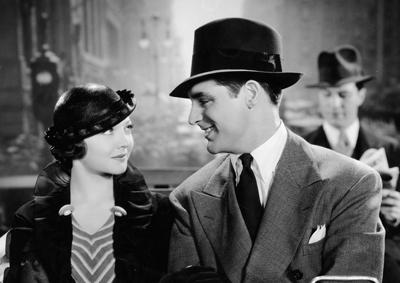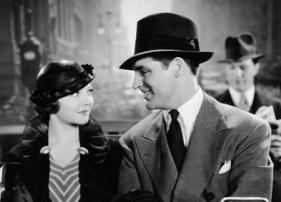“Thirty Day Princess is G-O-O-D! It’s fun. It’s clever. It’s suspenseful and it presents a running fire of bright dialogue that keeps the corners of your mouth turned up” — Chicago Daily Tribune
Directed by Marion Gering
As Paramount enjoyed enormous critical success in the early 1930s with the richly stylish films of DeMille, Lubitsch, Mamoulian, and Von Sternberg, the Great Depression severely threatened the studio’s financial viability. By 1933, Paramount had gone into receivership. Hundreds of studio employees made enforced exits, including producer B.P. Schulberg who had discovered “It” girl, Clara Bow. A former independent pioneer who became one of the most powerful producers in Hollywood, Schulberg’s return to independent production saw him churning out B-pictures for Paramount throughout the early 1930s, many of them helmed by ex-Broadway director Marion Gering and featuring Sylvia Sidney. With her intensely sad eyes, trembling lips, and diminutive and waif-like sensitivity, Sidney was immediately typecast as the studio’s depression-era heroine. Based on a story published in Ladies’ Home Journal by Clarence Budington Kelland, Thirty Day Princess would be one of Sidney’s rare screen appearances in a light comedy.
Four different writers shared credit for the ebullient yet simple script, including the great cinematic satirist Preston Sturges. In his autobiography, Sturges stated that he and Schulberg disagreed on the final writing credits of the film and that very little of his work was ultimately utilized. Although the old prince-and-the-pauper plot of switched identities was already becoming somewhat trite in Hollywood, critics were mostly kind to the film, claiming it a “neat little combination of Cinderella and Zenda.”
Under contract to Paramount at the time, a young Cary Grant was struggling to secure a studio identity in second-tier “tuxedo roles” (several of which were turned down by Gary Cooper). Thirty Day Princess was just such a film. During this period, studio head Adolph Zukor desired to keep Grant for as little money as possible. Knowing that a contract negotiation was forthcoming, Zukor turned down MGM’s request to let Grant star in Mutiny on the Bounty (1935) knowing that it would make him a huge star (Franchot Tone would end up receiving an Oscar nomination for the role). A furious Grant refused to renew his contract with Paramount and would go onto receive almost immediate critical and box-office successes at Columbia and RKO that would define his comedy prowess and leading man charisma.
Thirty Day Princess was preserved utilizing a nitrate composite print that was gifted to the Archive by Paramount Studios in 1971.
Todd Wiener
Paramount Productions, Inc. Producer: Emanuel Cohen. Screenwriters: Preston Sturges and Frank Partos. Story: Clarence Budington Kelland. Adaptation: Sam Hellman and Edwin Justus Mayer. Cinematographer: Leon Shamroy. Editor: Jane Loring. With: Sylvia Sidney, Cary Grant, Edward Arnold, Henry Stephenson, Vince Barnett.
35mm, b/w, 74 min.
Preserved in cooperation with Universal Pictures from a 35mm nitrate composite print. Laboratory services by The Stanford Theatre Film Laboratory, Audio Mechanics, DJ Audio.






 Mobile Navigation
Mobile Navigation



